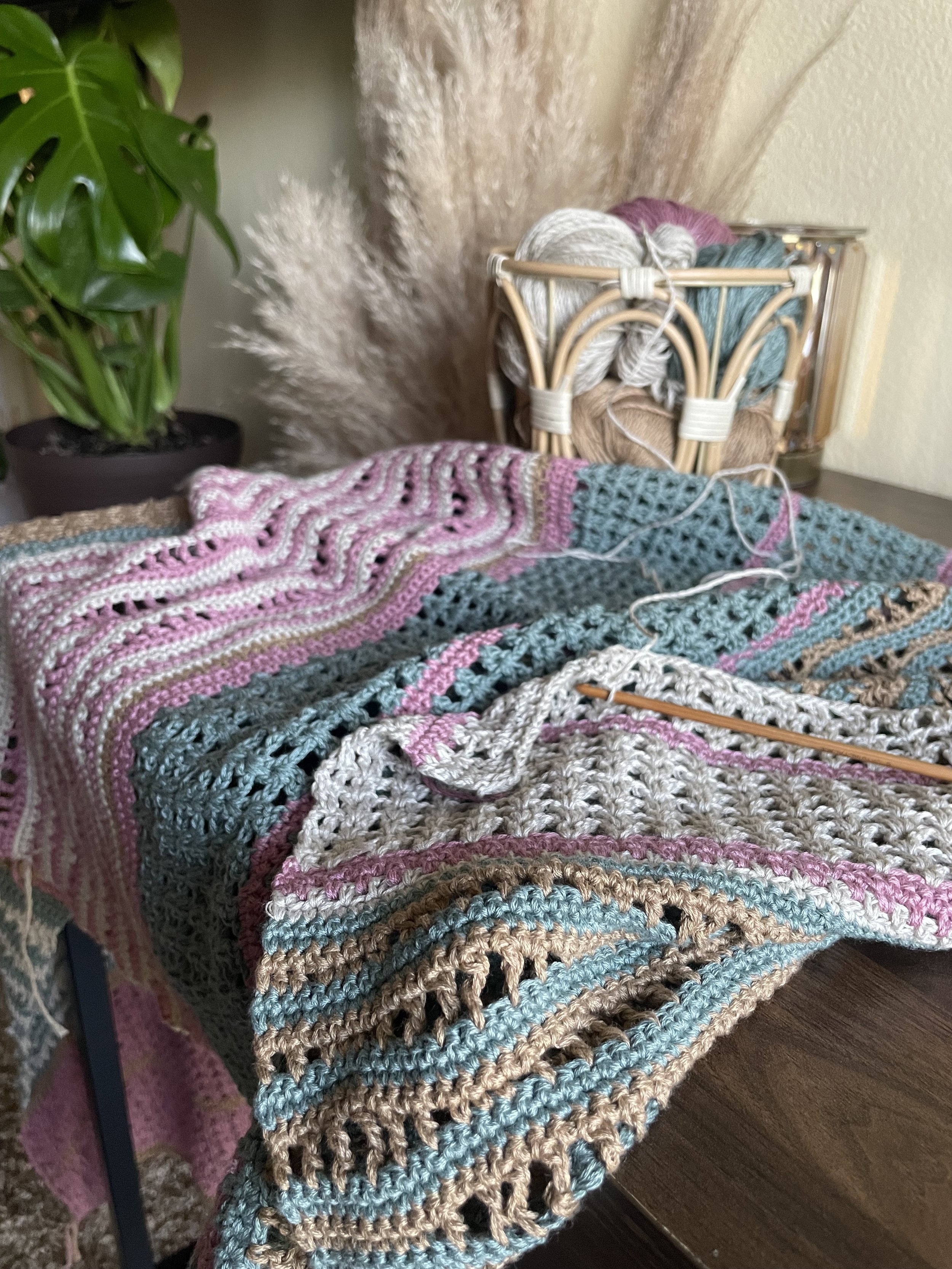Embracing Tradition
The Evolution of Knitted and Crochet Shawls and Wraps
Shawls and wraps hold a distinctive place in the tapestry of textile history, weaving together stories of culture, fashion, and artistry through their evolution. The intricate patterns of knitted and crochet shawls are not merely products of craft but are threads connecting us to our ancestors, serving both functional and aesthetic purposes. This journal entry explores the rich history of knitted and crochet shawls and wraps, tracing their journey from ancient civilizations to modern fashion.
The origins of knitting and crocheting are shrouded in history, with evidence suggesting that these crafts date back to the 3rd century AD. However, the art of creating shawls and wraps can be traced to ancient civilizations. In Egypt, fragments of knitted cotton were discovered, indicating the early use of knitting to create garments. Similarly, in South America, ancient cultures utilized crochet techniques in their textiles. Knitting and crocheting gained prominence in Europe during the Middle Ages. By the 12th century, knitted garments became a staple in European wardrobes, but the intricate lace shawls of the 17th century showcased the craft's true artistic potential.
These shawls, often knitted from fine silk and wool, became status symbols among the aristocracy. Thanks to the Arts and Crafts movement, the 19th century witnessed a resurgence in the popularity of hand-knitted and crocheted items. This era emphasized handcraft over industrial manufacturing, leading to a revival of knitting and crocheting. Shawls and wraps, in particular, became fashionable accessories adorned with intricate patterns inspired by nature and geometry. The two World Wars of the 20th century saw women knitting and crocheting shawls and wraps for soldiers, intertwining the craft with patriotism. Post-war, the invention of synthetic yarns brought vibrant colors and durability to shawls, reflecting the era's optimistic spirit. The latter half of the century saw these garments becoming symbols of cultural identity, with designs reflecting the heritage of diverse communities worldwide. Today, knitting and crocheting have experienced a renaissance, thanks to a growing appreciation for handmade goods and the proliferation of online communities sharing patterns and techniques. Modern shawls and wraps blend traditional craftsmanship with contemporary designs, proving that these garments are timeless in their appeal. The history of knitted and crochet shawls and wraps is a testament to the enduring nature of these crafts. From ancient tools to modern needles, shawls, and wraps have evolved, yet the essence of crafting something beautiful and functional remains unchanged. As we wrap ourselves in these garments, we envelop ourselves in history, carrying forward the legacy of countless artisans. Knitted and crocheted shawls and wraps are more than just articles of clothing; they are woven stories of human creativity and resilience. As we continue to create and wear them, we honor our ancestors' rich history and culture, ensuring that this art form thrives for generations to come.

